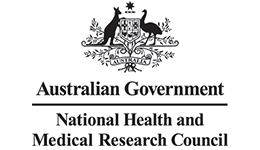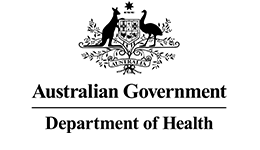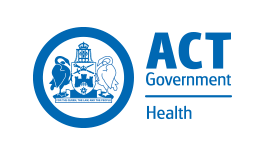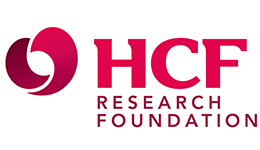Are healthy diets really more expensive?

Status completed
Start Date
End Date
While there is a public perception that healthy foods are expensive, despite several studies it is not clear whether healthy dietary patterns really cost more than less healthy diets.
This project developed the first nationally standardised tools and protocols to determine the relative price and affordability of healthy and unhealthy (current) diets.
Introduction
The new approach the team developed is now called the Healthy Diets ASAP (Australian Standardised Affordability and Price) method. By working out the real price of different diets, these standardised methods will help to determine whether the affordability of healthy food is a barrier to following a healthy diet.
Our research impact
Featured project resources
-
Are healthy diets really more expensive?
Resource category:Findings Brief
Date
Featured project news
-
Healthy diets in a time of food insecurity and rising cost of living
News Category: Prevention Centre NewsDate -
Focus on the food system not the individual, experts urge
News Category: Prevention Centre NewsDate -
How garbage food became normal
News Category: Media coverageDate
About
The price and affordability of healthy and current (less healthy) diets in Australia
Project titleWhat is the issue?
Unhealthy diets are the major preventable risk factor contributing to the burden of chronic disease in Australia. Data from the Australian Health Survey 2011-12 show that less than 7% of Australians consume diets that are consistent with the Australian Dietary Guidelines, and that at least 35% of the energy intake of adults and up to 41% of the energy intake of children comes from unhealthy (‘junk’) food and drinks. (Unhealthy foods are energy-dense food and drinks high in saturated fat, added sugar, salt and/or alcohol.)
While there is a public perception that healthy foods are expensive, despite several studies it is not clear whether healthy dietary patterns really cost more than less healthy diets.
Generally, the more people spend on food, the healthier their diet. Research has shown that low-income groups are at much greater risk of poor diet because, although they spend less per person on food, they spend a greater proportion of their income on food. In Australia, a healthy diet costs lowest-income families between 28% and 40% of their disposable income while a healthy diet only costs average-income families around 20% of their disposable income.
Although basic healthy foods don’t incur GST in Australia, the cost of healthy food has increased more rapidly than that of unhealthy food in Australia over the past 15 years.
While we know some information about food affordability in Australia, there is a lack of real-life data to inform relevant debates about fiscal policy from a health and diet perspective in Australia.
There are no nationally standardised tools or protocols to benchmark, compare and monitor food prices and affordability. While jurisdictions and research groups have used different food baskets as survey instruments, none is entirely consistent with current Australian Dietary Guidelines nor accurately reflects the current Australian diet. There are more than six different methods used throughout Australia to determine the cost of food from a health perspective but the tools that are generally used include healthier items but also some unhealthy items, such as sugar and sausages.
How did the project address the issue?
The project:
- Developed and tested standardised baskets of foods reflecting healthy (NHMRC-recommended Foundation Diets) and unhealthy (current intakes reported in the Australian Healthy Survey 2011-12) diets of representative Australian households
- Costed the standardised healthy and unhealthy (current) diet baskets in high and low socioeconomic areas in two major capital cities
- Determined the differential between the cost and affordability of healthy and unhealthy (current) diets of Australian households
- Determined the impact of factors that might influence the cost and affordability of different diets.
What were the outcomes?
This project developed the first nationally standardised tools and protocols to determine the relative price and affordability of healthy and unhealthy (current) diets. The new approach is now called the Healthy Diets ASAP (Australian Standardised Affordability and Price) method. By working out the real price of different diets, these standardised methods will help to determine whether the affordability of healthy food is a barrier to following a healthy diet.
What is the relevance for policy and practice?
The project determined the real price of healthy and unhealthy diets to inform health and fiscal policy decisions. The new standardised methods will help to answer the key policy questions of what is the difference in price and affordability of healthy and current (unhealthy) diets, and how these would change under different policy scenarios.
News and media
-
Healthy diets in a time of food insecurity and rising cost of living
News Category: Prevention Centre NewsDate -
Focus on the food system not the individual, experts urge
News Category: Prevention Centre NewsDate -
How garbage food became normal
News Category: Media coverageDate -
A healthy diet is cheaper than junk food but a good diet is still too expensive for some
News Category: Media coverageDate
Other news and media
2017
Professor Lee’s presentation at the Dietitians Association of Australian national conference in May 2017 generated widespread media interest, including:
- Fairfax Media: A healthy diet is cheaper, but we’re still spending big on junk foods
- 9 News: Research reveals Aussies spend half their food budget on ‘junk food’
- Plus interviews with ABC News
Resources
-
Are healthy diets really more expensive?
Resource category:Findings Brief
Date
Publications
Other publications
Presentations
- Lee A, Kane S and Lewis M, Are healthy diets really more expensive?, International congress of Obesity, World Obesity, Vancouver, Canada, 1-4 May 2016 (poster presentation).
- Lee A, Measuring the price of healthy and current diets, International Conference on Diet and Activity Methods, Brisbane September 2015.
- Lee A, Monitoring and benchmarking food price and affordability internationally; Third INFORMAS meeting, QUT Brisbane, September 2016.
- Lee A, Food Prices Symposium, ISBNPA Conference, Edinburgh June 2015 (con-convenor).
- Lee A, Measuring the cost of healthy diets, Food Prices Methods Symposium, ISBNPA Conference, Edinburgh June 2015.
- Lee A, Nutrition policy and the price of healthy food, Research Collaboration meeting, Australian China Centre for Public Health, Sun Yat Sen University, Guangzhou, PR China, 10-12 May 2015.
Workshop
National Healthy Diets ASAP Forum, to seek agreement on final methods for nationally standardised food price and affordability surveys. Brisbane, 10 March 2016.
People
Lead investigators
Project team
-
Dr Meron Lewis
University of Queensland -
Professor Paul Kelly Professor Paul Kelly has finished working with the Prevention Centre.
-
Megan Cobcroft Megan Cobcroft has finished working with the Prevention Centre.
NSW Ministry of Health -
Mr Mathew Dick Mr Mathew Dick has finished working with the Prevention Centre.
Queensland Health -
Ms Elizabeth Good Ms Elizabeth Good has finished working with the Prevention Centre.
Queensland Health -
Ms Sarah Kane Ms Sarah Kane has finished working with the Prevention Centre.
Queensland University of Technology -
Timothy Landrigan Timothy Landrigan has finished working with the Prevention Centre.
WA Australian Bureau of Statistics -
Dr Christina Pollard Dr Christina Pollard has finished working with the Prevention Centre.
WA Health and Curtin University -
Dr Rebecca Ramsay Dr Rebecca Ramsay has finished working with the Prevention Centre.
Queensland University of Technology













